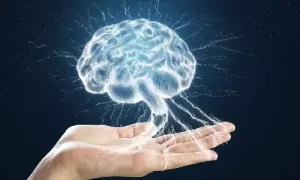
Dr. Swati Rajagopal, Consultant, Infectious Diseases, Aster CMI Hospital
March 24 every year is World Tuberculosis (TB) Day and is geared towards building public awareness on tuberculosis, a condition that leads to the deaths of nearly one-and-a-half million people each year mostly in developing countries. TB remains the world’s deadliest infectious killer. According to studies conducted by Australian researchers, each day, nearly 4,500 people lose their lives to TB and close to 30,000 people fall ill due to this preventable and curable disease. An estimated 54 million lives have been saved since the year 2000 and TB mortality has reduced by 42 per cent due to worldwide efforts to combat TB. To ensure that the governments reach targets to fight TB, the UN got heads of state to make pledges to end TB, at a first ever such high level meet in 2018.
The campaign against TB has continued strongly post this summit. The World TB Day 2019 has an important campaign theme – ‘It’s time’. The campaign calls for quick action on promises made by world heads of governments. The heads had suggested better access to prevention and treatment, adequate funds for research, better accountability, a people-centric TB response, to promote an end to stigma and to consider TB as a right to health issue.
In continuation of these efforts and its drive towards Universal Health Coverage, the World Health Organization (WHO) has launched an initiative to accelerate response to TB and ensuring access to care. On the occasion of the 2019 World TB Day, governments, affected communities, civil society groups, health-care providers, and national/international partners have been called on by WHO to fight TB under a single, united banner – “Find. Treat. All. #EndTB” – to make sure that no one is excluded from the campaign.
The campaign is focused on non-western regions broadly as nearly half of the world’s TB cases are reported from South-East Asia region and India accounts for one fourth of the global TB burden. According to the Union Ministry of Health and Family Welfare, in 2017, India had the world’s highest share, over a quarter of all TB cases globally, 2.7 million, and accounted for 32% of deaths due to the disease.
In India, Operation ASHA is a remarkable model to help patient’s battle tuberculosis. There is stigma still attached to tuberculosis. Treatment of drug-resistant tuberculosis is long – requiring enormous social support for patients and their families. Operation ASHA is responsible for mobilizing the community for delivery of Multi-drug-resistant (MDR) – TB treatment and in collaboration with the government of India has provided care to patients in slums and other centres beyond hospitals and health care or diagnostic centres. Tuberculosis as an infection in India requires the collaboration between government and private health care centres. This has enabled better case detection, notification, standardised affordable molecular methods of detection and quality health care.
SYMPTOMS OF TB
TB has symptoms only when in active phase. TB has basic symptoms like cough and fever. It affects the lungs and can affect other parts of the body. Some important symptoms include spinal and joint pain, meningitis, blood in the urine, and inability of the heart’s capacity to pump blood.
CAUSES
TB is caused by Mycobacterium tuberculosis bacterium. It spreads in the air and may infect people when somebody with TB coughs, sneezes and spits. Also, you can catch TB mostly from people who you interact with most – at home, workplace or other spaces where you have a large density of people. If you have received treatment for atleast two weeks, you may not be classified as being in active TB phase.
TREATMENT
TB can be cured when the right medication is administered correctly. Antibiotic treatment will depend on a person’s age, health, resistance to drugs, whether TB is latent or active, and the location of infection (i.e., the lungs, brain, kidneys). If you have latent TB, you will be administered only one kind of TB antibiotics, but if you have active TB (particularly MDR-TB), you may be administered multiple drugs. Antibiotics have to be administered for atleast six months. There have been some interesting changes in the management of MDR TB that is resistant to a very important treatment drug like Rifampicin. New drugs like Delamanid and Bedaquiline have improved the clinical outcome in patients with MDR TB. Injectable agents are no longer the pivot for treating patients with this disease. Even if symptoms have disappeared, it is crucial to complete the whole duration of the antibiotic treatment to ensure that the disease is eliminated.








